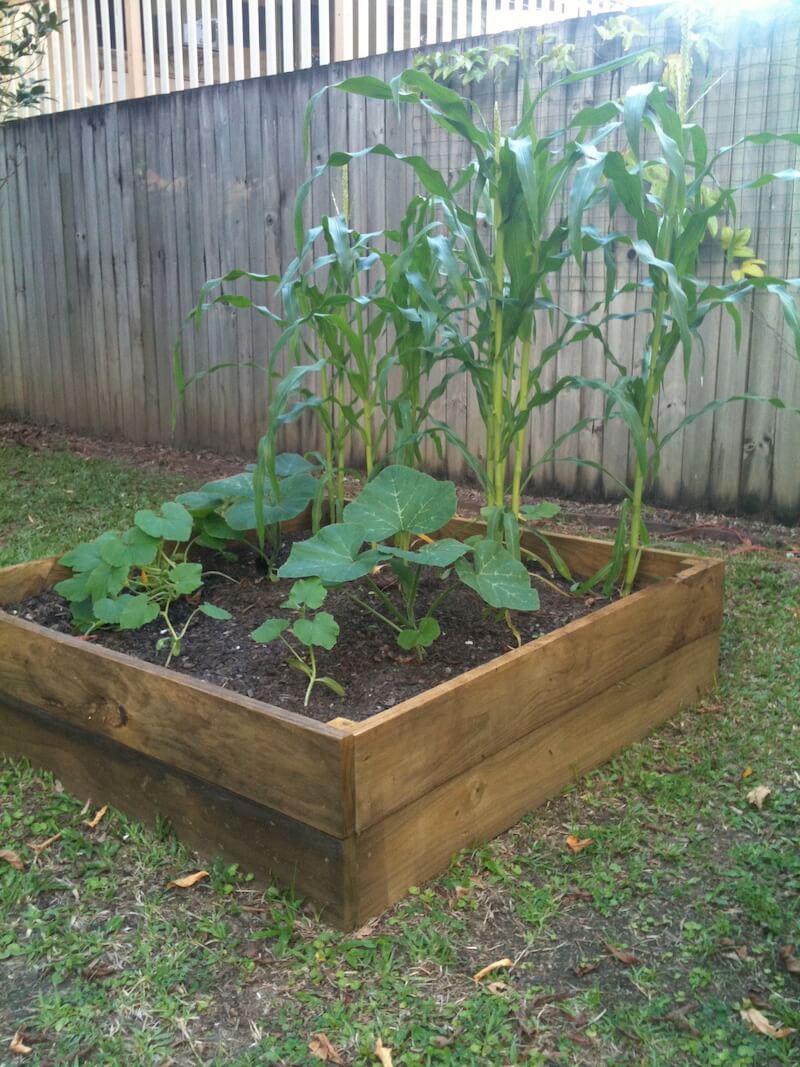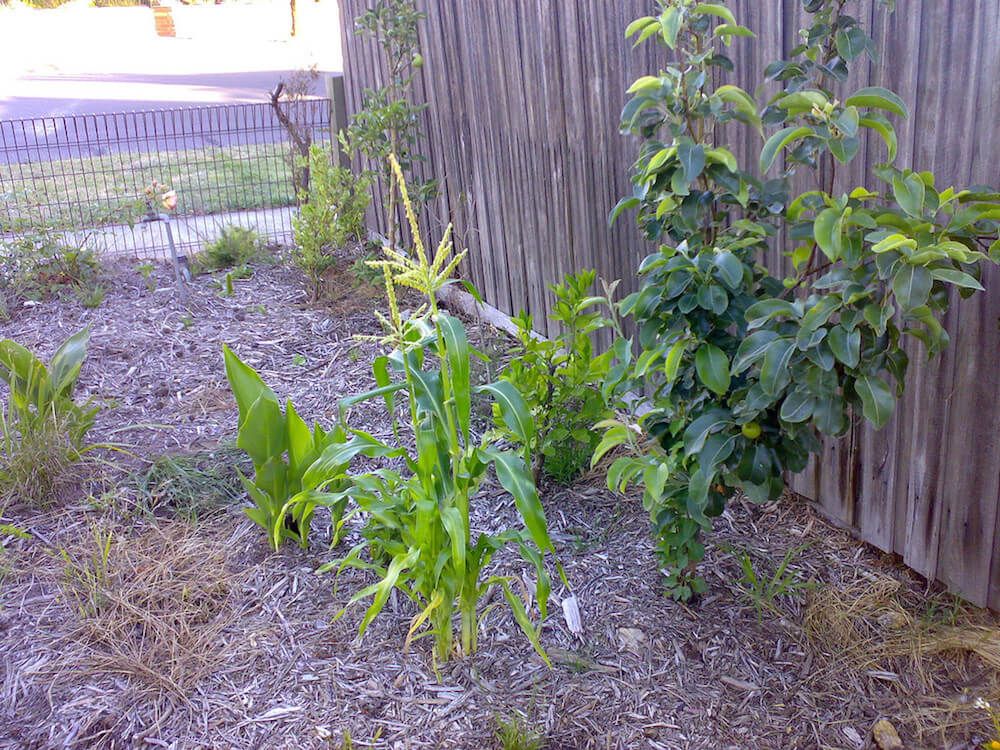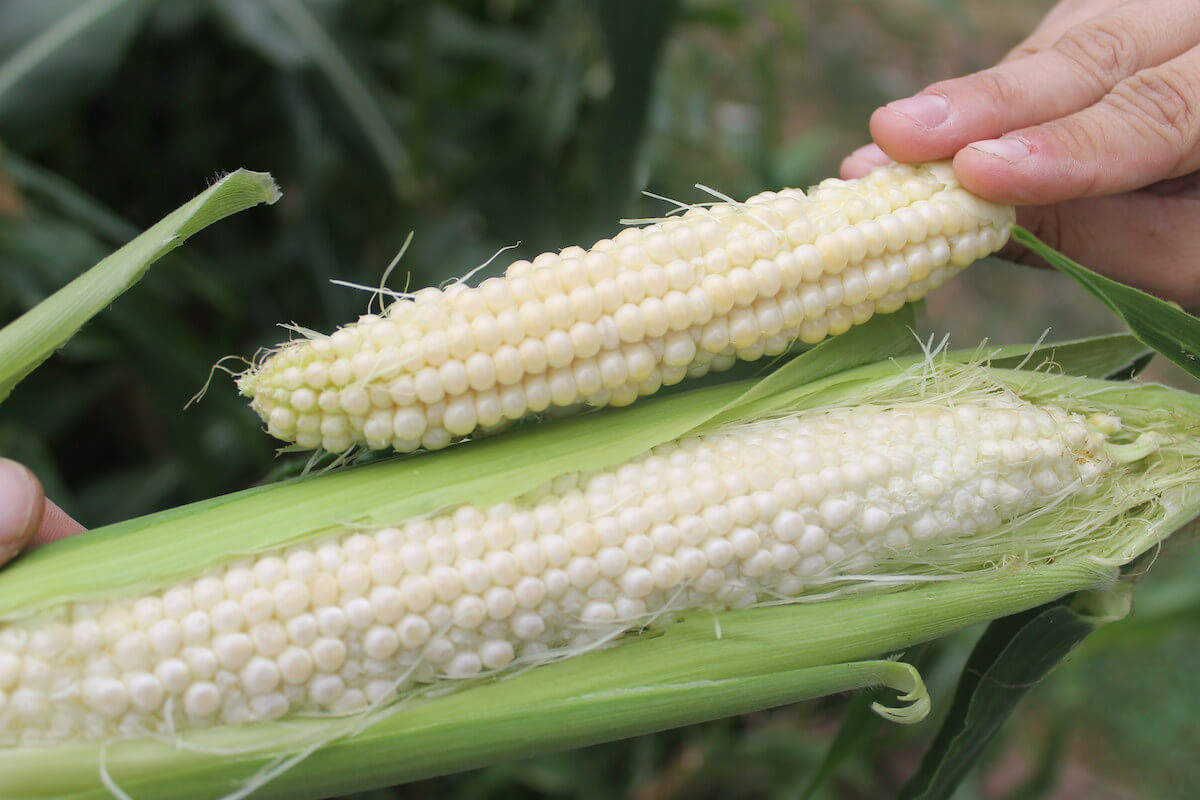Companion Planting For Sweet Corn • Insteading

Companion planting will show you how to develop delicious sweet corn. The gardening approach combines good neighbor flowers, herbs and greens that help the growth of each other. Good neighbor vegetation can current essential nutritional vitamins to the soil, entice pollinators to the yard, current shade, shelter or help for various vegetation, administration weeds, and deter and sophisticated predatory insect pests within the hunt for host vegetation.
- Helpful herbs – Pungent herbs similar to sage, hyssop, horehound, rosemary, mint, and thyme enhance style, encourage progress, and deter cabbage moths, cabbage worms, aphids, ants, and cutworms.
- Good neighbor flowers – A pleasing vibrant addition to any homestead yard, nasturtiums deter yard pests, add seen curiosity and coloration to the panorama. Every the leaves and flowers are edible.
By way of a way of trial and error, expert gardeners know the chaos of scent and coloration of companion planting tends to draw a numerous array of helpful bugs to the homestead whereas averting harmful bugs that may destroy the harvest. Companion planting brings stability and harmony to the yard.
The Three Sisters
To maximise rising space inside the metropolis homestead, savvy gardeners normally use the standard companion planting strategy of cultivating squash or pumpkins, pole beans, and sweet corn collectively within the an identical plot.


“By the purpose European settlers arrived in America inside the early 1600s,” writes The Earlier Farmer’s Almanac, “the Iroquois had been rising the ‘three sisters’ for over three centuries. The vegetable trio sustained the Native Folks every bodily and spiritually. In legend, the vegetation had been a gift from the gods, on a regular basis to be grown collectively, eaten collectively, and celebrated collectively.
Each of the sisters contributes one factor to the planting. Collectively, the sisters current a balanced meals routine from a single planting.
- As older sisters normally do, the corn supplies the beans wished help.
- The beans, the giving sister, pull nitrogen from the air and convey it to the soil for the benefit of all three.
- As a result of the beans develop by the use of the tangle of squash vines and wind their means up the cornstalks into the daylight, they preserve the sisters shut collectively.
- The massive leaves of the sprawling squash defend the threesome by creating residing mulch that shades the soil, retaining it cool and moist and stopping weeds.
- The prickly squash leaves moreover preserve away raccoons, which don’t want to step on them.
Collectively, the three sisters current every sustainable soil fertility along with a nutritious food regimen. Perfection!
Why Plant Sweet Corn?
There could also be nothing further gratifying than serving up a platter of corn on the cob: sweet, delicious, and dripping with butter: the bounty of your yard. Sweet corn’s tenderness and style is at its peak when picked inside the early morning, latest from the yard
Sweet corn is an environment friendly provide of important B-complex dietary nutritional vitamins similar to folates, thiamin, pantothenic acid, niacin, riboflavin, and pyridoxine. In addition to, sweet corn includes healthful portions of essential minerals along with copper, zinc, magnesium, and manganese. Extreme in fiber and low in power, sweet corn compliments any meal.
Historic previous Of Sweet Corn
For lots of of years, sweet corn (Zea mays) was a staple meals of indigenous cultures all through North and South America.
Native to Mexico, corn is taken into consideration to be the world’s oldest agricultural crop.
Getting ready The Yard—Amend Yard Soil
Rising sweet corn, one amongst America’s favorite greens, is easier than most homesteaders take into consideration. It requires solely a great deal of sunshine and a bit little bit of room to develop.
Sweet corn does biggest in well-drained, loamy soil with a pH stage that is barely acidic. A pH stage of 6.0-6.5 is nice to develop sweet corn.
To seek out out pH ranges in your yard, soil pH testing kits will be discovered at native home and yard services or take a soil sample to your county extension service office for testing.
Sweet corn thrives in nutrient-rich soil. Enhance yard soil with a liberal utility of aged herbivore manure (e.g. cow, sheep, horse, goat, or llama) and work soil properly.
Take away rocks and roots whereas breaking up soil clods. Skilled gardeners advocate amending the yard plot with pure compost and manures inside the fall to rearrange the plot for spring planting.
Varieties Of Sweet Corn
In response to the Faculty of Illinois Extension Service, “sweet corn is also divided into three distinct varieties in accordance with genetic background: common sugary (SU), sugary enhancer (SE) and super-sweet (Sh2).”
Customary sweet corn varieties comprise a sugary (SU) gene that is accountable for the sweetness and creamy texture of the kernels. SUs are biggest suited to being picked, husked and eaten inside a extremely fast time. Inside the home yard, that’s usually doable nevertheless not on a regular basis smart. The earlier adage advises corn growers to start the water boiling, run to the patch, select and husk the corn, run once more to the pot, put together dinner the corn, and eat or course of immediately.
The assorted completely totally different sweet corn cultivars differ in coloration, sweetness and maturity time. Select a spread that the majority precisely suits your native rising circumstances. Most homesteaders elect to develop varieties with superior consuming and retaining qualities. The corn crop is normally ready for harvest 65-90 days from planting.
Favorite Sweet Corn Varieties
I relish the seed catalogs of spring. So many choices: I actually really feel like a toddler on the candy retailer. I want to try all of them. From multi-colored to peach colored kernels, there are dozens of kinds of sweet corn obtainable to develop inside the homestead yard.


This 12 months I planted 5 groupings of sweet corn supplemented with three completely various kinds of pumpkins. I chosen a sweet corn choice known as Peaches and Cream. Prized for its intensely sweet style, this choice is ready early inside the season, reaching six ft tall at maturity.
The bi-colored kernels are company and juicy. Spherical each corn stalk, I planted mounds of pumpkins, alternating Fairy Story, Cinderella, and Black Futsu varieties.
Throughout the bottom of the corn stalks, I planted Kentucky Shock and Blue Lake Pole beans. These inexperienced bean varieties solely produce a small amount of tender, youthful beans day-after-day which will be wonderful for selecting, making them a tasty aspect dish for summertime menus.
As I pull weeds and tend the plantings, I visualize a contented harvest and a busy time of canning and freezing the generous manufacturing of my yard.
If Mother Nature cooperates, my yard plot will current better than enough corn, beans, and pumpkin for summer season and fall enjoyment, winter storage, with an abundance to share with family and buddies.
Rural homesteaders with enough gardening room to cultivate a giant corn, bean, and squash patch, uncover companion planting produces a worthwhile cash crop when purchased on the native farmer’s market.
Sweet corn might be cooked latest, canned, dehydrated, or frozen for winter storage. My favorite sweet corn varieties embrace:
- Sugar Buns
- Sweet Targets,
- Trinity
- Glass Gem
- Jubilee
- Sundance
- Peaches and Cream
Recommendations For Planting Sweet Corn – Starting Seedlings
Dependent in your United States Hardiness Zone, sow sweet corn indoors anytime from mid-March by the use of mid-April. Plant particularly particular person coir pots to scale back root hurt when transplanting. Handmade newspaper pots moreover work properly for sweet corn seedlings.
Within the occasion you want to plant straight outside, be sure to attend a minimum of two weeks after all hazard of frost has handed.
Sweet corn does biggest if its soil has been given a possibility to warmth. Sweet corn seeds fail to germinate if the soil temperature is decrease than 60 ranges Fahrenheit. The Faculty of Illinois Extension Service advises that “successive plantings can yield steady harvests from early summer season until frost if the local weather cooperates.”
Related Put up: Dent Corn Locations a Dent in Our Properly being
When planting outside, plant two sweet corn seeds collectively, placing each planting in pairs spaced two inches apart, with pairs spaced 18 inches apart. To encourage wind pollination and improved crop manufacturing, plant corn in clusters or groupings, fairly than in extended rows: the larger the grouping, the upper the pollination.
When the corn seedlings attain 4 to six inches tall, take away and eradicate the weakest seeding of the pair to allow the plant room to develop. Expert corn growers know the fact inside the earlier adage: corn have to be knee-high by the Fourth of July.
Sweet Corn Rising Requirements
To flourish and present a bountiful harvest, sweet corn requires 30-35 acre inches of water all through the rising season. Sweet corn is certainly pretty drought tolerant. Nonetheless, all through the moisture-critical tassel and kernel enchancment progress phases, sweet corn requires better than an inch of water per week for biggest enchancment and progress.
Harvest Time
With a minimal amount of effort, each of your corn stalks will produce two-to-six ears of corn. Secondary ears are generally smaller in measurement and mature later than the primary ear on each corn stalk.


Harvest sweet corn when the kernels are in a “milk stage:” completely formed, nevertheless not however totally matured. Most kinds of sweet corn are ready for harvest about 20 days after the silk strands appear. When the corn is ready, the silk begins to brown, and the kernels produce a milky liquid when punctured.
For ease in harvesting, take away each ear with a company downward snap. Eat, refrigerate, or course of sweet corn as shortly as doable. When the harvest is accomplished, decrease down the cornstalks, chopping them in lengths in order so as to add to the compost pile.





